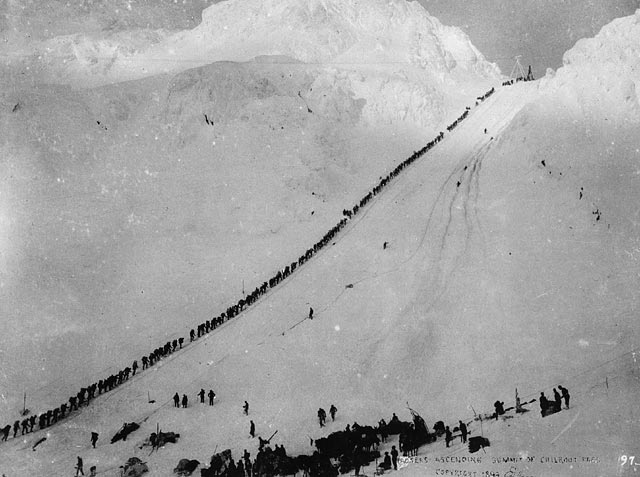"keine Lebensversicherung"... versicherungen sind nur für die idioten, die sonst überhaupt nicht mit geld umgehen können... die einzig stabile lösung ist auswandern, fragt sich nur wohin, weil europa = scheisse.
17:49 Was machst du persönlich, um durch den "Winter" zu kommen?
Ja, auf jeden Fall immer schön Feuer, damits schön warm ist, Tee trinken und Sport.
Nein, Spaß beiseite. Ähm ja, man muss natürlich sich darauf vorbereiten, wie vorhin schon erwähnt,
das muss mental passieren und monetär. Und mental ist das allerwichtigste, erstmal verstehen,
wie funktionieren die Zyklen, und wie funktioniert unser Geldsystem.
Na, weil nur wenn man das weiß, wenn man dieses Wissen Intus hat,
dann kann man sich auch aktiv dagegen wehren und schützen natürlich, vor Enteignung, vor Entwertung.
Und noch mal, ich kann so sagen, also ein Allzeithoch bei Bitcoin bedeutet nicht,
dass der Bitcoin Preis steigt, sondern dass der Euro immer tiefer fällt.
Das ist ganz wichtig zu verstehen, weil ein Bitcoin ist ein Bitcoin, 1 Kilo Gold ist 1 Kilo Gold,
und ähm, was ich mache natürlich ist Diversifikation.
Also ich versuche mein Geld, das ich verdiene, in sichere Häfen zu bringen,
die durch die Inflation nicht enteignet werden, weil wir leben jetzt einer inflationären Welt
und in dieser inflationären Welt musst du raus aus Papier werden,
musst raus aus deinem Tagesgeld und musst rein in limitierte Werte.
Und das sind natürlich alles, was durch Natur limitiert ist.
von Edelmetallen, Edelsteinen, Land und so weiter, Aktien,
hin auch zu äh limitierten Werten, die limitiert sind durch die Mathematik wie z.B. Bitcoin.
Und da würde ich auf jeden Fall reinskalieren.
19:00
Ich würde wenig Geld auf dem Konto lassen, keine Lebensversicherung, kein Bausparvertrag,
keine Anleihen, um Gottes Willen, der Anleihenmarkt ist in meiner Ansicht nach jetzt im Bärenmarkt, nach 40 Jahren Bullenmarkt.
Und dann natürlich baue ich auch schon halt Plan B, Plan C,
also Strategien auch, um auch im Ausland ein Standbein zu haben
außerhalb Deutschlands, außerhalb die EU.
ähm, sowohl privat als auch natürlich mit dem Unternehmen,
um dann halt auch zu gehen, wenn die wirklich einen Krieg vom Zaun brechen
oder wenn die Kommunisten in Berlin einziehen
oder wenn ein Vermögensregister oder Transparenzregister kommt durch die EU
und so weiter, weil da sollte man einfach dann schon ein Plan B in der Schubladte haben.
19:40
Und was machst du in deinem privaten Umfeld, Freunde, Familie?
Weil das ist ja auch was, was mich oft erreicht, wo ich halt merk,
ich beschäftige mich jetzt seit mehreren Jahren damit,
wir haben eine Community, wir wir helfen Leuten dabei damit umzugehen,
aber oft kommen halt dann irgendwann Leute so aus dem privaten Umfeld auf einem zu,
die sich halt die letzten Jahre nie damit befasst haben,
jetzt vielleicht irgendwie mal merken "oh da kommt was"
und irgendwie ist das halt dann super super schwierig.
Was gibst du den Menschen mit, die jetzt hal Freunde, Familie sind
und halt irgendwie jetzt vielleicht auch langsam aufwachen?
20:08
Mhm. Ja, genau. Also, es gibt ja keine Schubladenlösung,
das sind ja immer maßgeschneiderte Lösungen,
wenn man dann irgendwie eine Exit Strategie baut
und für viele ist es halt auch nicht vorstellbar, ne?
Weil, die sind hier verankert, die haben Freundeskreis,
sind im Verein, arbeiten hier sind Angestellte,
nicht jeder kann irgendwie sagen "macht's gut, ihr Idioten,
macht euren Scheiß alleine, ich hau ab".
Ja, aber bei mir z.B. in der Honorarberatung ist es gerade
in JEDER Beratung wird gefragt,
wo kann mein Geld hin flüchten
und wo kann ich hin flüchten im Notfall, ne?
Und es sind unterschiedliche Gründe natürlich, warum die gehen möchten.
Also bei den einen ist die Intention Angst vor Krieg,
bei den anderen halt Enteignung,
bei den anderen irgendwie Deutschland ist unsicher geworden,
ich fühle mich nicht mehr sicher, hier Schwimmbad-Grapscher, Messerstecher etc. pp.
Also völlig legitime Gründe allesamt, ne?
Und dann muss man halt überlegen,
welche Sprache spreche ich, wo möchte ich hin?
Aber wenn man sagt, man möchte mit der Familie gehen,
dann muss man die Familie halt dementsprechend auch aufklären, informieren,
damit die halt auch die Warnsignale sehen,
weil du kannst niemanden irgendwie zwingen mit irgendwie ins Ausland zu ziehen,
nur weil man irgendwie vor irgendwas Angst hat.
Also, ich würde auch mir ganz klar als Ziel setzen mit meinen Freunden, Bekannten zu reden
und dann gemeinsam vielleicht auch eine Lösung zu finden irgendwo,
weil natürlich, wenn du zu fünft irgendwie eine Burg kaufst oder ein paar Häuschen kaufst,
irgendwo ist es angenehmer als irgendwo allein zu wohnen,
weil man schwächt sich ja erstmal,
wenn man seine vertraute Umgebung verlässt.
Ich habe dazu auch viele Videos gemacht, ne, und auch ein Buch geschrieben,
wie so eine Auswanderungsstrategie aussehen kann,
aber jetzt in der Beratung sehe ich jeder Jeck ist anders.
Es kommt drauf an, hast du 5000 € oder 5 Millionen, ne?
Also da muss man halt überlegen, welches Land ist auch passend, ne?
Nicht jeder fühlt sich irgendwie wohl in Spanien
oder nicht jeder fühlt sich wohl irgendwie dann in Schweden,
in der Schweiz oder in Südamerika.
Deswegen, also mein Rat ist wirklich die direkte Aufklärung,
um vielleicht sogar noch vor Ort eine Besserung herbeizuführen,
weil umso mehr Menschen wissen,
hey, hier läuft einiges schief im "Staat der DMark", ja,
dann kann man ja auch was dagegen machen,
indem man dementsprechend wählt, oder Druck auf die Politik ausübt.



 Caption: The Chilkoot Pass in the midst of the Klondike Gold Rush of 1898. Prospectors hike up the frigid pass often making multiple trips to haul all of their gear through the pass.<br>
Source:
Caption: The Chilkoot Pass in the midst of the Klondike Gold Rush of 1898. Prospectors hike up the frigid pass often making multiple trips to haul all of their gear through the pass.<br>
Source: